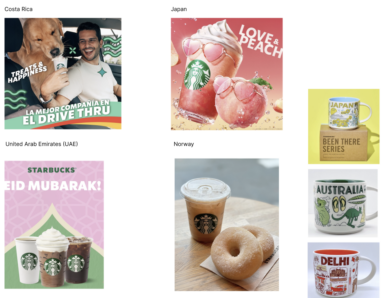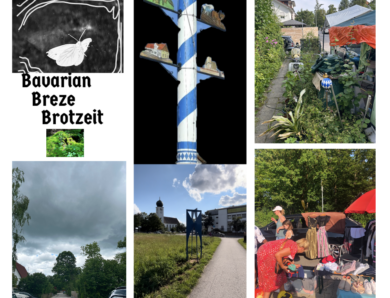
Week 8
Research task: Reflect on areas of design that you could potentially engage with in the future
I’m interested in web design, UX/UI and motion design. For example, I like this interactive web experience. I’ve always wanted to improve my illustration skills with tools like Procreate.
I think it would be interesting to work in an agency that offers various services, including front-end web development, where I currently work (e.g. of a agency that offers various services: https://magnetism.fr/about). The advantage would be that you get to know and work on different areas and projects with people from different professions (e.g. a motion design consisting of several designers from different agencies). But I am also interested in print design. I would like to learn more about printing techniques, possible uses, etc. I’m also curious about book design, magazine design and branding. I think it very much depends on the agency/studio and the work with the clients if I would be interested.
Design crit Webinar and session with Louis
In this week’s webinar, we talked about our progress with brief 2. I presented my idea with the dandelion. Paul asked: “If you look at the growth of the flower. Does it accurately represent how flowers grow?”.


My first dandelion sketch (left) and the end result in Adobe Illustrator after a few iterations
Maria suggested researching the dandelion in more detail, e.g. in Greek mythology it stands for strength and resilience. It only grows if there is enough sun (I wonder why it exists in Germany then), and if it gets enough care. She also added the idea of compost. Louis mentioned the water cycle and the evaporation of water. Lena said that I could relate this to my first brief with the “seeds of creativity”.
Louis and I met to exchange ideas in the student-led channel and talked mainly about brief 3 and the expectations placed on us. With the theme of “noticing the ignored” in mind, we discussed uniqueness and whether that was what brief 3 should be about. Louis mentioned Kenya Hara from the previous weeks and his approach to unlearning. Louis said it didn’t have to be a topic about something unnoticed or different, but that we could take the ordinary and look at it from a different angle. We also both think that we should involve people. Furthermore, I believe that a historical aspect could be relevant, as history is important to the field of graphic design and there are times when we can learn from history.
Thoughts about brief 3
I haven’t finished thinking about brief 2 yet, but it’s time to think about brief 3. I’m temporarily living in a town which is a suburb of Munich. A quick search shows me that 21697 people live here. I like that there is a lot of nature, a forest is only a 5 minute walk away, and the area has some old houses with large gardens like they used to build them in the past. I didn’t grow up exactly in this place, but not too far from it either. Because I always went to different schools and moved around all the time, I don’t feel at home in this place or in the place where I lived with my family as a teenager. The only place I have more memories of and people I feel connected to is the place where I lived as a child. But that place is about 1-2 hours away by car.
I lived in the city center of Barcelona for several years until recently. It makes no sense to compare my current place of residence with Barcelona. Barcelona is very unique. In terms of the architecture, the light, the atmosphere, the people etc. etc. So I asked myself: what else can I find special here apart from nature? How can nature and the city be combined? Are they connected? And what makes a city or town special?
I have seen posters on the street for certain events taking place here. It seems that posters are the means of communication in this area. One event is taking place this weekend. A street event around the town office. Some people would say that there is no real center here because there is no square (and Barcelona has many of them). In Mediterranean areas, it is common for all life to revolve around these squares. That doesn’t seem to be so much the case here (but then again, this is Germany, not Barcelona). Next to the the town office there is a church, a fish restaurant, several other small stores and a supermarket. It doesn’t seem to be a place where anyone lingers and just watches or drinks coffee (although there is a bakery with seating).
I went to the area around the town office and took some photos with my grandfather’s analog camera. Although it always takes some time to develop them, I feel I need to be more attentive and selective with his camera as I can only take 36 pictures per film.
I plan to come back tomorrow when the event takes place, or maybe even one more time before. And afterwards, when it’s over. I’m considering also maybe interviewing people (1-2 questions).
Other thoughts on this task are the forest, photographing different tree shapes and finding the architecture of the forest. Somehow making a connection to the people who live here. Perhaps a kind of project about art in the forest. After talking to a friend of my mother’s who has lived here all his life, I also think of the old railroad line, which also houses a small museum. And the first chapel in the village, which still has the original village character with a few houses around it. It was not marked on the Google Maps and was later replaced by the large church next to the town office. Another idea is the maypole, which is a traditional Bavarian symbol and cultural asset and is somehow unique to the village in which it stands.
I did a Google search for “What makes a city special?”. At first, the results were more about what makes a city great, beautiful or attractive. I started by typing “Why is [my city]…” and let Google auto-complete the results, which was pretty interesting.
I also checked on tripadvisor what one can do in the town and got 5 results: A coffee I had never heard of, an outlet that doesn’t even exist, a miniature golf course, an amusement center and the climbing forest, which is the largest in Munich. Furthermore, I thought about the difference between a town and a city (article about the difference between a town and a city).
Tutorial and feedback
I had a brief conversation with Paul about my finished result for brief 1 and my studio practice pdf. He liked that I was using my grandfather’s camera to tell a story. He also wanted the uniqueness of the fingerprints to be visible on the objects in the studio pdf.
Louis gave me positive feedback on the presentation of my ideas in the design critique this week. He said that the way I summarized my points and made them actionable helped him understand the brief better.
Brief 3 continuation
I continued my research on the internet and found a dark piece of history in this city. And it was quite shocking. At the same time, I became curious to find out more about this place and what happened in the past. It is a building that served as a studio for one of the most important sculptors, Josef Thorak, during the nazi regime.
He built large figures for political and other public areas. The building itself is quite hidden, but is surrounded by a fence and is not open to the public. After the Second World War, it housed American soldiers, later a film studio, a school and an archive. Today it houses an architectural collection of the city of Munich. I also found a short film from 1943 showing the artist at work. I am torn between my curiosity to find out more about the history of the building (even after the war) and on the other hand the feeling that I should not investigate further as there seems to be no potential for growth and positivity on this foundation.
Next, I went to the climbing forest in the morning before it opened to get a feel for the place. I took some photos with my grandfather’s camera and videos with my cell phone.

Afterwards, I went to the street event that I had photographed earlier. There was a cheerful atmosphere with lots of food stalls, music, a tombola and some regional clubs such as the IT club for seniors and the photography club. Unfortunately, it started to rain, so I couldn’t see the photos and also had to take shelter with my camera.
I conducted an interview with several people with just one question. The question I asked was: “What makes this city special?” The first interviewee, a young man (about 23 years old) who plays in a local soccer team, answered that he feels very comfortable with the people here (he will soon move to this town from a town not so far away), plus it is a quiet and nice place to live. Three children (around 12 years old) answered that for them it is because “you know a lot of people here”. A couple replied that the location is perfect (you are quickly in the countryside, but also in the city of Munich), and there are also many activities and opportunities to get involved in community affairs. Another woman moved here 30 years ago (from a distant area in Germany) and said it was simply the right place for her because all her children and friends are here. And she wouldn’t want to start over anywhere else.
In summary, it can be said that people feel comfortable here because they have good contacts, maintain social relationships and the location is close to nature but not too far from the city.
What is community?
youtube: https://www.youtube.com/watch?v=9P3shuWBRBk
Research material
…And the question is how important are side projects. Julian and Adrian from Intro Design say that it’s a way to feel validated, it provides relief, and side projects often feed back into what will be one day a full-time job. Sam Winston mentions that sometimes you have to force yourself to do nothing until things feel new again.





No Comment